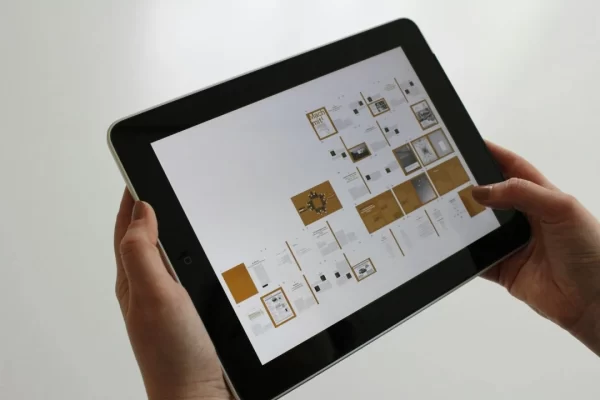User experience (UX) design isn’t just about aesthetics — it’s about creating digital spaces that are intuitive, enjoyable, and useful. A well-designed user experience guides visitors effortlessly through your website, helping them find what they need while building trust in your brand.
As the digital landscape becomes more competitive, mastering UX is a smart way to stand out, boost engagement, and convert visitors into loyal customers.
Key Takeaways
- A great UX approach blends creativity, empathy, and research.
- Mind mapping and storyboarding enhance planning and clarity.
- User research and personas ensure human-focused design decisions.
- Prototyping and user testing reduce risk and improve usability.
- Heuristic evaluation fine-tunes your site for real-world success.
Table of Contents
- Key Takeaways
- Mind Mapping
- User Research
- Creating User Personas
- Storyboards
- Empathy Map
- Customer Journey Map
- Competitor Analysis
- Interface Prototyping
- User Testing
- Heuristic Evaluation
- FAQ
Mind Mapping
Why Mind Mapping Fuels Great UX Design
- A mind map visually organizes ideas around a central goal, helping you structure web content logically.
- Start with a main idea and expand into related subtopics to avoid missing key elements.
- Keeps creative brainstorming aligned with business goals and user expectations.
- Helps identify gaps or overlaps in information flow early in the design phase.
- Encourages collaboration and team ideation for website layout and features.
User Research
How User Research Shapes Smart Web Design
- Helps you design from the user’s perspective rather than personal assumptions.
- Involves interviews, focus groups, surveys, and competitor benchmarking.
- Reveals user pain points, behavior patterns, and unmet needs.
- Guides choices about content layout, navigation, and feature design.
- Creates a data-backed foundation for building user-friendly interfaces.
Creating User Personas
Why User Personas Make Websites More Relevant
- Represents real users with shared traits, behaviors, and goals.
- Humanizes the design process, moving beyond abstract demographics.
- Aligns design decisions with the needs of your target audience.
- Helps prioritize features and content that resonate with your users.
- Encourages empathy and prevents designing for “everyone” — which rarely works.
Storyboards
Storyboarding: Visualizing User Scenarios
- Illustrates the user’s journey with visual sequences like comics or flowcharts.
- Highlights user motivations, emotions, and actions at each step.
- Encourages designers to view the website through the user’s eyes.
- Identifies potential friction points before development starts.
- Enhances collaboration across design, development, and marketing teams.
Empathy Map
Empathy Mapping: Understanding User Emotions
- Breaks down what users say, think, feel, and do during interaction.
- Simplifies large volumes of research data into actionable insights.
- Highlights emotional drivers behind user behavior and choices.
- Reveals user frustrations and unmet needs clearly and visually.
- Encourages user-centered design by keeping empathy front and center.
Customer Journey Map
Mapping the Customer’s Decision Path
- Visualizes each touchpoint from discovery to purchase or conversion.
- Helps identify where users get stuck or lose interest.
- Reveals gaps in your website’s flow or content strategy.
- Highlights opportunities for personalized experiences.
- Offers a clear roadmap to optimize for conversion and retention.
Competitor Analysis
Learning from Competitors for UX Excellence
- Reveals design strengths and weaknesses across your industry.
- Shows how competitors solve similar user problems.
- Uncovers design trends and evolving user expectations.
- Inspires ideas to outperform competing websites.
- Helps avoid common design mistakes seen in your niche.
Interface Prototyping
Why Prototyping Accelerates Smart Design Decisions
- Visualizes how your final product will look and function.
- Allows early testing of navigation, layout, and interactions.
- Reduces costly design changes late in development.
- Encourages team feedback before launch.
- Tools like Adobe XD and InVision simulate real user journeys.
User Testing
User Testing: Validating Design Before Launch
- Measures if users can navigate your site easily and intuitively.
- Identifies usability issues like confusing menus or broken flows.
- Uses tools like heatmaps, A/B testing, and interviews.
- Provides real-world feedback for continuous improvement.
- Reduces guesswork and enhances user satisfaction post-launch.
Heuristic Evaluation
Evaluating Design Against Proven Usability Principles
- UX experts assess your site using best-practice heuristics.
- Quickly identifies friction points that impact user experience.
- Prioritizes design flaws for immediate resolution.
- Complements user testing for a well-rounded evaluation.
- Saves time and boosts user satisfaction by refining early.
Frequently Asked Questions
Why is UX design so important for a website?
UX design improves user satisfaction, boosts engagement, and drives conversions by making websites intuitive and easy to navigate.
What is the first step in UX design?
User research is the foundation, helping you understand your audience’s needs before designing anything.
What tools help with prototyping?
Popular tools include Adobe XD, Figma, InVision, and Principle — all simulate the look and feel of your website for early feedback.
How do empathy maps improve UX?
Empathy maps visualize user emotions, thoughts, and actions, helping you design solutions that genuinely meet user needs.
Can competitor analysis improve UX design?
Yes! Studying competitors reveals industry standards and opportunities for innovation, helping you avoid mistakes and refine your strategy.
Conclusion
A good approach to UX design involves thorough user research followed by steps to ensure that your website is structured accordingly. When you understand your users’ goals, emotions, and challenges, you can design digital experiences that don’t just impress — they convert.
By applying these research-backed strategies, you’ll ensure your website stands out in a crowded digital world while providing the value your audience expects.
Want to elevate your website’s user experience? Let’s create a user-first design that turns clicks into customers. Contact us today for a free consultation!



